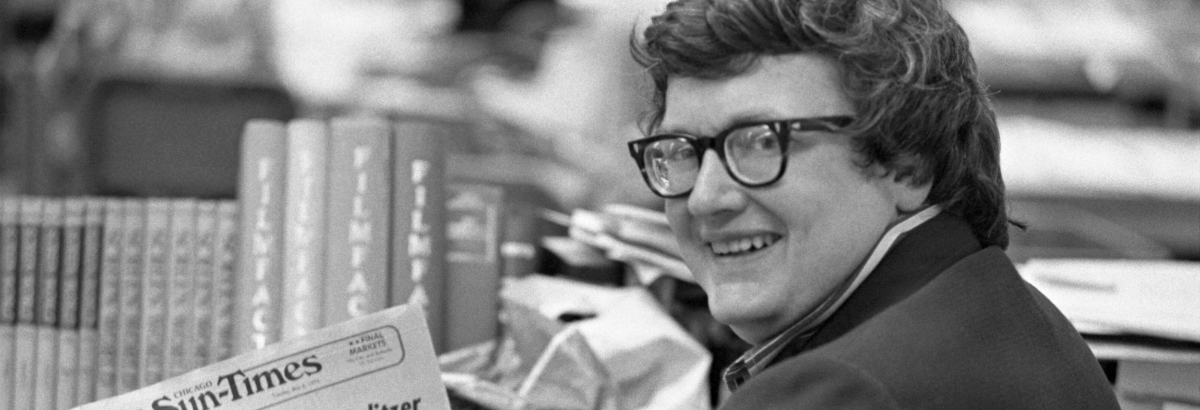This past weekend, a new documentary about the life of Roger Ebert called ‘Life Itself’ (based upon his book of the same name) debuted at the Sundance Film Festival. Directed by Steve James, who helmed the great ‘Hoop Dreams’ and ‘The Interrupters’, the movie not only tells Roger’s story, but is given access to the final few months of his life. Thanks to a crowdsourcing campaign for the film that gave streaming access to contributors, I got a chance to watch the new documentary.
As a child, everybody wants to be somebody when they grow up. Many want to be doctors or lawyers, while others have more specific dreams, such as being a movie actor or even President of the United States. Thanks to Roger Ebert, I always wanted to be a writer – more specifically, a writer who wrote about the movies. While other kids were staying up late on Friday nights to watch ‘Friday Night Videos’, I would stay up to catch ‘Sneak Previews’ on PBS with Roger and Gene Siskel. Then, if I was lucky, on Saturday I’d talk my parents into dropping me off at the theater to see one of the films Roger and Gene approved the night before.
‘Life Itself’ spends a big chunk of its nearly two-hour running time covering the lifelong partnership between Ebert and Siskel, but it also gives us insight into the Roger many of us didn’t know (or, at least, didn’t know until his memoir came out in 2011). It also shows us Roger at the very end of his life – in and out of the hospital, with a body that cancer had eaten away, but a mind and energy that no disease could ever touch.
During the course of the film, Roger communicates in three different ways: through archive video from when he still had the ability to speak; through the reading of his writing (voiced in the movie by Stephen Stanton); and through the computer translator in the laptop that rarely left Roger’s side during his final days.
The first part of the film covers Roger’s early days as a writer for The Daily Illini, the student newspaper at the University of Illinois, where Roger went to college. Later, after becoming a reporter for the Chicago Sun-Times, Ebert was given the film critic job for the paper – not because he lobbied for it, but because the prior critic had retired and a position needed to be filled. It was a job that would bring Ebert the Pulitzer Prize for criticism in 1975.
The documentary doesn’t pull any punches when it comes to Roger’s personal life. We learn that Ebert was rather unlucky in love, with one friend claiming that he “had the worst taste in women.” Viewers will also learn of his long battle with alcoholism, which Roger himself confesses that – if not for the many hangovers that eventually led him to decide to quit – would have resulted in him becoming “unemployed, unmarried and probably dead.”
During his career, Ebert rubbed shoulders with many members of the film industry, and some of those closest friendships are covered here as well. We learn that when Roger saw that ‘Faster Pussycat Kill Kill’ was playing, he rushed to his local theater to catch it… not because he’d heard great things about the movie, but because he’d heard about all the buxom women in the film. This led to a friendship with Russ Meyer that would result in Roger penning the screenplay for ‘Beyond the Valley of the Dolls’. When friends are asked to comment on how Ebert came to write the story for such a movie, one says, “I have no answer,” while another can only give one reason for Roger’s interest: “Boobs.”
Director Martin Scorsese contributes to ‘Life Itself’ by telling about how Ebert came across one of his very first films, ‘Who’s That Knocking at My Door’ (a.k.a. ‘I Call First’), and claimed that, within a decade, Scorsese would become the “American Fellini” – to which Scorsese’s initial reaction was: “You think it’s going to take that long?” He also comments on how Ebert gave a Thumbs Down to ‘The Color of Money’, but was never toxic in his review, instead giving Scorsese criticism that proved helpful to him as a director.
We also get an up-close-and-personal look at Roger’s relationship with his wife Chaz, whom we learn for the first time in this movie that they met at an AA meeting. In many ways, ‘Life Itself’ is as much about her life and her love for Roger as it is about Roger’s life and his love for Chaz. We also learn about how she didn’t find out until the day Roger died that he had signed a Do Not Resuscitate order, and more about the final moments of Roger’s life.
Like the book of the same name, ‘Life Itself’ tugs at your heart but also tickles your funny bone. It pulls no punches and gives viewers a brutally honest look at the life of one of America’s greatest writers. It’s somehow fitting that our final goodbye to Roger comes through the medium that he spent so much of his life loving to tell us about: the movies. As if there was any doubt, this one gets a big Thumbs Up.
Rating: 







